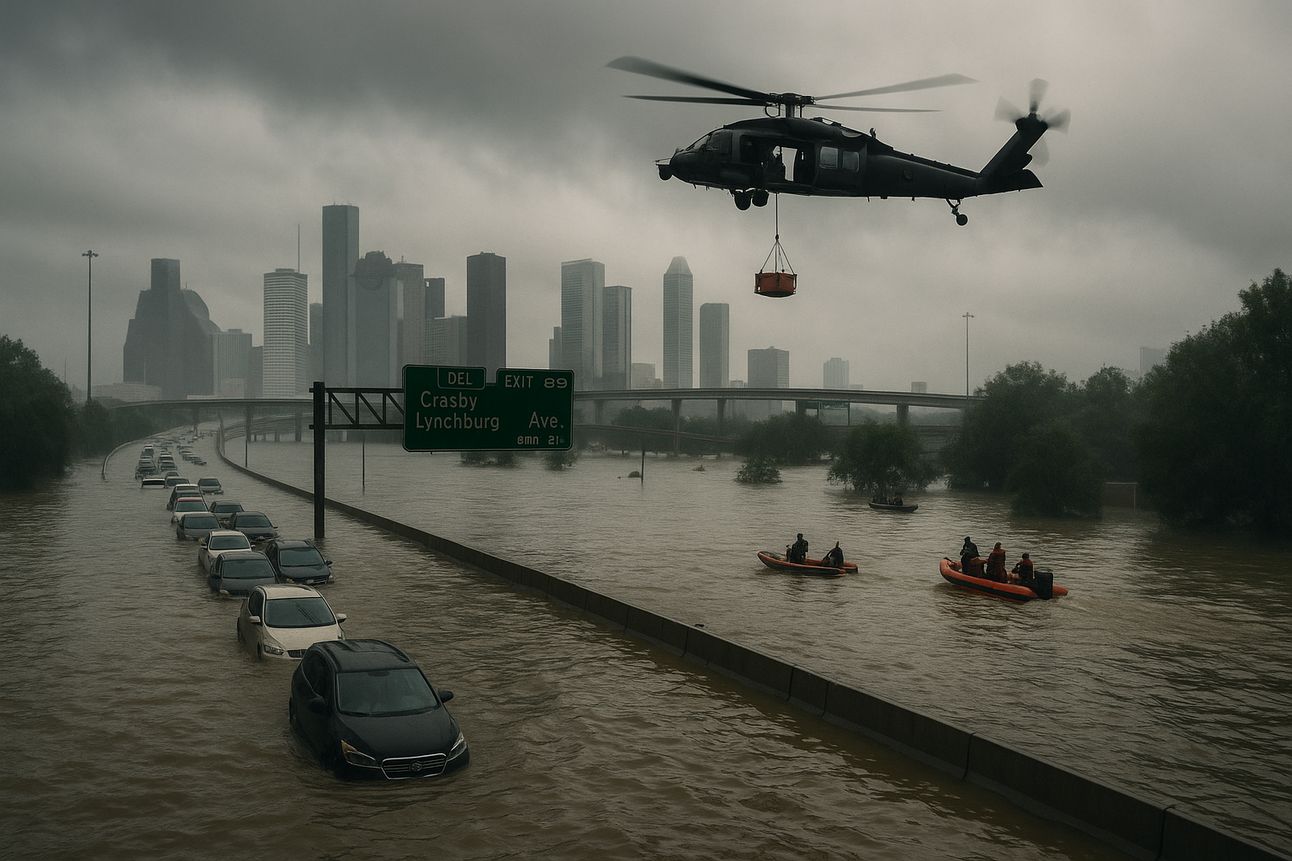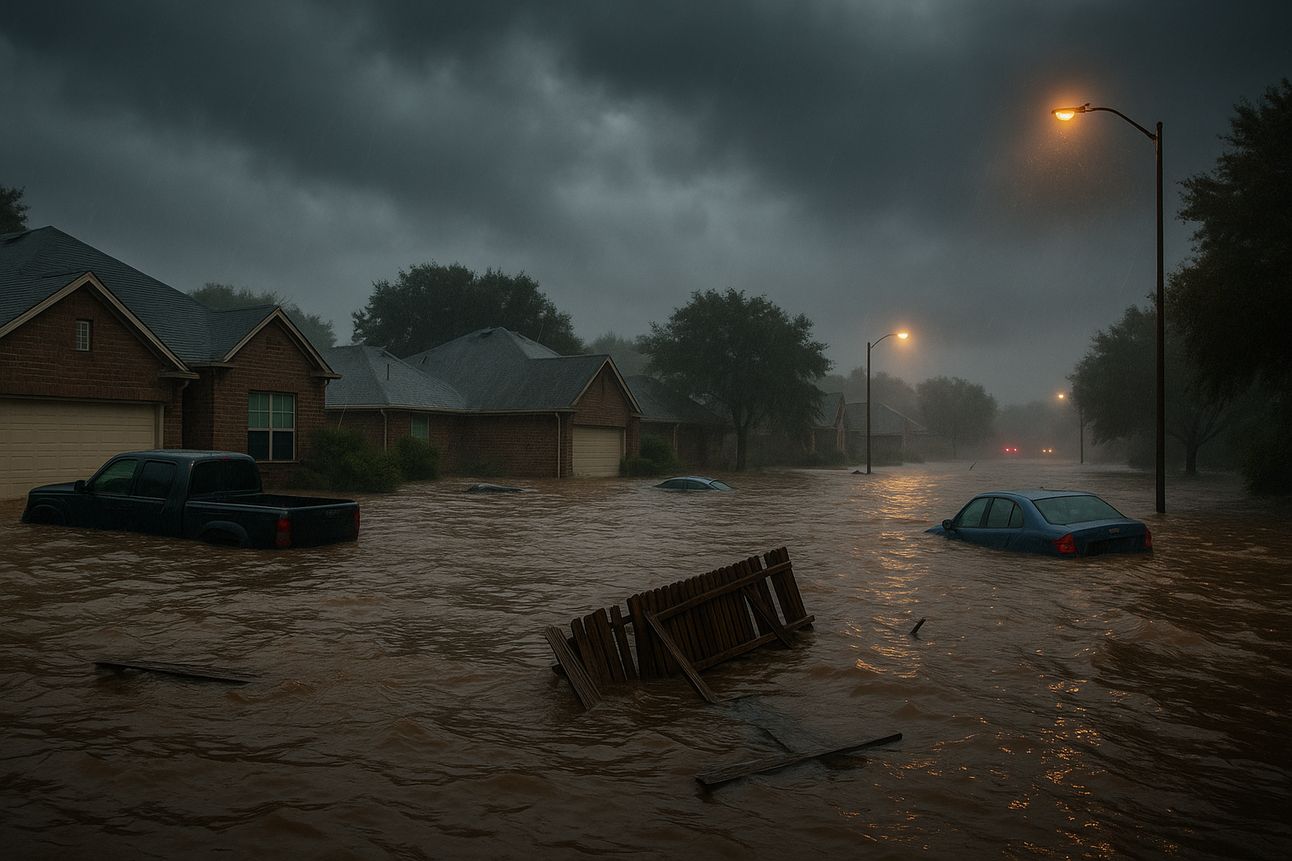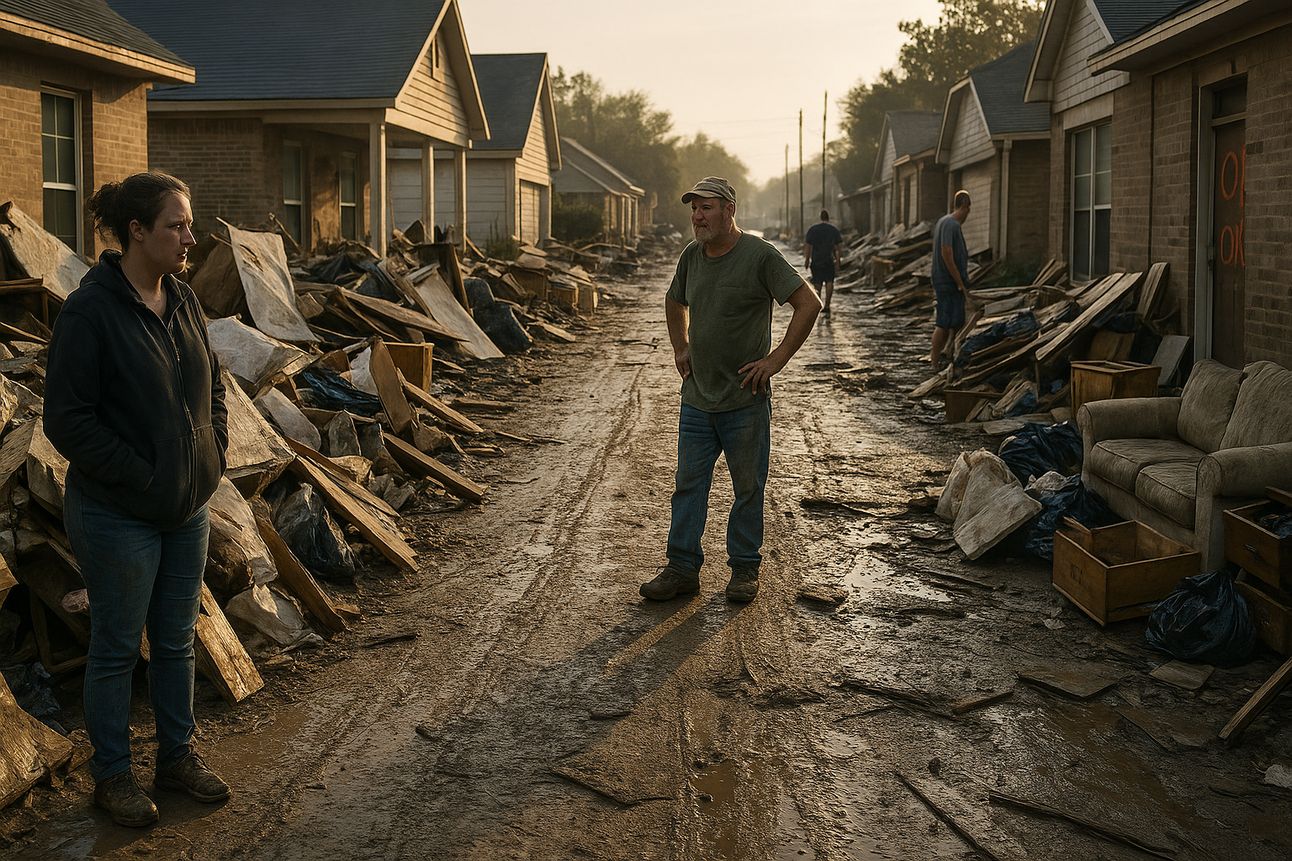- Green Glow
- Posts
- 🌱 What the Texas Floods Reveal About Climate Change’s Deadly Impact 🚨🌊
🌱 What the Texas Floods Reveal About Climate Change’s Deadly Impact 🚨🌊
Deadly floods in Texas reveal how climate change is worsening extreme weather. Learn the science, the failures, and the urgent need for climate action.
In the early hours of July 4, 2025, Texas Hill Country—known for its cypress-lined rivers and summer camps—was devastated by a historic flood. Triggered by the remnants of Tropical Storm Barry and an unusually humid atmosphere, the storm dumped over 1.8 trillion gallons of rain—enough to cover the entire state of Texas in four inches of water—within just four hours.
This deluge overwhelmed the Guadalupe River watershed, creating a deadly flash flood that rose 20 feet in just 90 minutes. The disaster struck overnight on a holiday weekend, catching hundreds off guard. Over 100 lives were lost, including campers and staff at the beloved Camp Mystic and other nearby institutions. Another 170 people remain missing in Kerr County.
But this was not a freak accident. It was a grim forecast of what a warming climate makes inevitable.
Table of Contents

The Science: Why This Flood Was So Extreme
Texas Hill Country is no stranger to floods—meteorologists even call it “Flash Flood Alley” due to its steep terrain and shallow soils. But this event was unprecedented in both intensity and speed.
What made it worse? Climate change.
Here’s how:
Warmer air holds more moisture. For every 1°F increase in temperature, the atmosphere can hold about 4% more water vapor.
More moisture = heavier rain. Storms that pass through these wetter skies drop dramatically more rain.
Flood frequency is changing. What used to be a “500-year flood” is now happening multiple times per decade.
From 2015 to 2017, Houston alone endured three 500-year floods. Nationwide, events once considered rare are now disturbingly routine.
The Human Cost of Underprepared Systems
Despite the National Weather Service (NWS) issuing timely warnings, systemic issues worsened the disaster:
Federal staffing cuts doubled vacancy rates at NWS offices, undermining capacity.
NOAA stopped tracking billion-dollar disasters under the Trump administration.
The U.S. climate assessment website was shut down, erasing access to authoritative data.
Key weather satellite data sharing was halted, affecting hurricane forecasting.
Even though many camps and communities followed alerts and evacuated, the damage was immense—and the tragedy could have been reduced with better-resourced systems.

Lessons from Disaster: What Needs to Change
The floods are a warning bell, not just for Texas, but for the whole nation. Here's what they teach us:
1. Climate Change Amplifies Existing Risks
It doesn't create entirely new disasters—it makes known dangers worse, more frequent, and harder to predict.
2. Emergency Infrastructure Must Be Modernized
We need:
Real-time stream gauges
Up-to-date radar
24/7 staffed forecasting stations
Resilient early-warning systems
3. Preparedness is an Investment, Not a Cost
Every $1 spent on disaster prevention yields $10 in saved damage and lives.
4. We Need Informed and Engaged Citizens
Many Americans don’t realize how climate change already affects them—until it hits home. Public pressure can drive real political action.
Hope Isn’t Lost: Solutions Are Within Reach
Despite the heartache, there is hope—and Texas is part of the solution:
Texas leads the nation in wind and solar energy and is innovating in geothermal and energy storage.
The Nature Conservancy and other groups are advocating for nature-based solutions like restoring wetlands to absorb floodwaters.
This fall, Texans will vote on whether to dedicate $1 billion annually to a Water Fund that could support flood resilience projects.
Individually, we may not control weather patterns or energy grids. But we can use our voices to demand better preparedness, clean energy transitions, and climate education in our communities.

Conclusion
A flood doesn’t check your voter registration before it sweeps away your home. Climate change doesn’t care where you live or who you vote for. It affects everyone.
The good news? Most Americans (63%) already care. What’s missing is the visibility of that concern. Policymakers need to hear it loudly and clearly—from you.
As Katharine Hayhoe put it:
“Doing nothing—and saying nothing—isn’t an option if we want a better future for our children.”
FAQs
What caused the 2025 Texas Hill Country floods?
The floods were triggered by remnants of Tropical Storm Barry combining with unusually humid air, dropping over 1.8 trillion gallons of rain in four hours—far exceeding the region's drainage capacity.
How is climate change linked to these floods?
Climate change is increasing global temperatures, which allows the atmosphere to hold more moisture. This leads to heavier, more intense rainfall events, making flash floods like this more frequent and severe.
Why was this flood so deadly?
The flood hit overnight on a holiday weekend, catching many off guard. Despite timely alerts from the National Weather Service, systemic issues like agency underfunding and outdated infrastructure reduced preparedness.
What policy failures contributed to the disaster?
Recent federal cuts led to understaffed forecasting agencies, discontinued tracking of major weather events, and restricted access to key climate data. These failures left communities more vulnerable.
Can floods like this be prevented in the future?
While natural disasters can't be stopped, their impact can be reduced through investment in flood infrastructure, early-warning systems, climate-resilient planning, and clean energy solutions.
You May Also Like
External Links
Air pollution still plagues nearly half of Americans. That does a number on our health
Kicking up a stink: row over sewage pollution blighting Cape Town’s beaches
A Stunning Image of the Australian Desert Illuminates the Growing Problem of Satellite Pollution
Paris said au revoir to cars. Air pollution maps reveal a dramatic change.
Follow Us:
X: https://www.x.com/greenglownews
Youtube: https://www.youtube.com/@greenglownews
Instagram: https://www.instagram.com/greenglownews
Sponsored Links